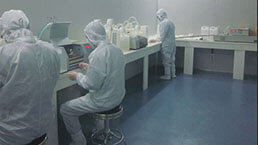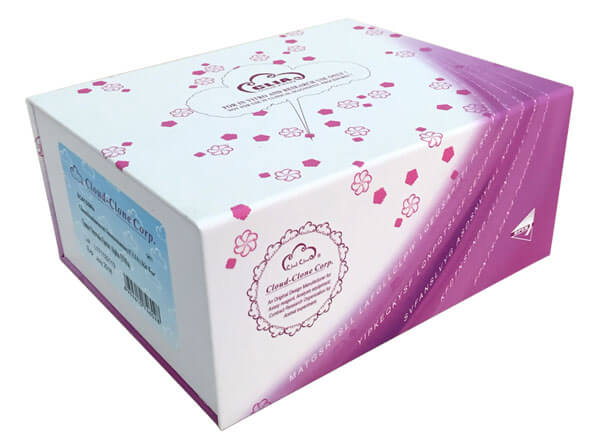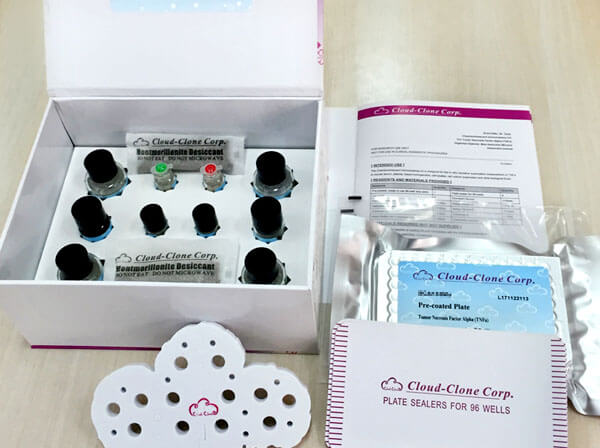CLIA Kit for Growth Differentiation Factor 15 (GDF15) 

PDF; MIC1; NAG-1; PLAB; PTGFB; Macrophage inhibitory cytokine 1; NSAID-activated gene 1 protein; Placental bone morphogenetic protein; Prostate differentiation factor
- UOM
- FOB US$ 588.00 US$ 840.00 US$ 3,780.00 US$ 7,140.00 US$ 58,800.00
- Quantity
Overview
Properties
- Product No.SCC034Hu
- Organism SpeciesHomo sapiens (Human) Same name, Different species.
- ApplicationsChemiluminescent immunoassay for Antigen Detection.
Research use only - DownloadInstruction Manual
- CategoryCytokineApoptosisTumor immunityInfection immunity
Sign into your account
Share a new citation as an author
Upload your experimental result
Review

Contact us
Please fill in the blank.
Recovery
Matrices listed below were spiked with certain level of recombinant Growth Differentiation Factor 15 (GDF15) and the recovery rates were calculated by comparing the measured value to the expected amount of Growth Differentiation Factor 15 (GDF15) in samples.
| Matrix | Recovery range (%) | Average(%) |
| serum(n=5) | 81-99 | 85 |
| EDTA plasma(n=5) | 98-105 | 101 |
| heparin plasma(n=5) | 88-102 | 95 |
Precision
Intra-assay Precision (Precision within an assay): 3 samples with low, middle and high level Growth Differentiation Factor 15 (GDF15) were tested 20 times on one plate, respectively.
Inter-assay Precision (Precision between assays): 3 samples with low, middle and high level Growth Differentiation Factor 15 (GDF15) were tested on 3 different plates, 8 replicates in each plate.
CV(%) = SD/meanX100
Intra-Assay: CV<10%
Inter-Assay: CV<12%
Linearity
The linearity of the kit was assayed by testing samples spiked with appropriate concentration of Growth Differentiation Factor 15 (GDF15) and their serial dilutions. The results were demonstrated by the percentage of calculated concentration to the expected.
| Sample | 1:2 | 1:4 | 1:8 | 1:16 |
| serum(n=5) | 95-103% | 86-101% | 82-99% | 91-101% |
| EDTA plasma(n=5) | 90-99% | 97-105% | 79-96% | 80-89% |
| heparin plasma(n=5) | 86-101% | 98-105% | 80-103% | 86-93% |
Stability
The stability of kit is determined by the loss rate of activity. The loss rate of this kit is less than 5% within the expiration date under appropriate storage condition.
To minimize extra influence on the performance, operation procedures and lab conditions, especially room temperature, air humidity, incubator temperature should be strictly controlled. It is also strongly suggested that the whole assay is performed by the same operator from the beginning to the end.
Reagents and materials provided
| Reagents | Quantity | Reagents | Quantity |
| Pre-coated, ready to use 96-well strip plate | 1 | Plate sealer for 96 wells | 4 |
| Standard | 2 | Standard Diluent | 1×20mL |
| Detection Reagent A | 1×120µL | Assay Diluent A | 1×12mL |
| Detection Reagent B | 1×120µL | Assay Diluent B | 1×12mL |
| Substrate A | 1×10mL | Substrate B | 1×2mL |
| Wash Buffer (30 × concentrate) | 1×20mL | Instruction manual | 1 |
Assay procedure summary
1. Prepare all reagents, samples and standards;
2. Add 100µL standard or sample to each well. Incubate 1 hours at 37°C;
3. Aspirate and add 100µL prepared Detection Reagent A. Incubate 1 hour at 37°C;
4. Aspirate and wash 3 times;
5. Add 100µL prepared Detection Reagent B. Incubate 30 minutes at 37°C;
6. Aspirate and wash 5 times;
7. Add 100µL Substrate Solution. Incubate 10 minutes at 37°C;
8. Read RLU value immediately.

Test principle
The microplate provided in this kit has been pre-coated with an antibody specific to Growth Differentiation Factor 15 (GDF15). Standards or samples are then added to the appropriate microplate wells with a biotin-conjugated antibody specific to Growth Differentiation Factor 15 (GDF15). Next, Avidin conjugated to Horseradish Peroxidase (HRP) is added to each microplate well and incubated. Then the mixture of substrate A and B is added to generate glow light emission kinetics. Upon plate development, the intensity of the emitted light is proportional to the Growth Differentiation Factor 15 (GDF15) level in the sample or standard.;
Giveaways
Increment services
-
 Single-component Reagents of Assay Kit
Single-component Reagents of Assay Kit
-
 Lysis Buffer Specific for ELISA / CLIA
Lysis Buffer Specific for ELISA / CLIA
-
 Quality Control of Kit
Quality Control of Kit
-
 CLIA Kit Customized Service
CLIA Kit Customized Service
-
 Disease Model Customized Service
Disease Model Customized Service
-
 Serums Customized Service
Serums Customized Service
-
 TGFB1 Activation Reagent
TGFB1 Activation Reagent
-
 Real Time PCR Experimental Service
Real Time PCR Experimental Service
-
 Streptavidin
Streptavidin
-
 Fast blue Protein Stain solution
Fast blue Protein Stain solution
-
 Single-component Reagents of FLIA Kit
Single-component Reagents of FLIA Kit
-
 Streptavidin-Agarose Beads
Streptavidin-Agarose Beads
Citations
- Growth Differentiation Factor 15 and Coronary Collateral FormationPubMed: 20014173
- Elevated levels of GDF-15 is associated with increased angiotensin II in hypertensive patients with Type 2 diabetespme-2016-0030
- Rapamycin improves renal injury induced by Iodixanol in diabetic rats by deactivating the mTOR/p70S6K signaling pathwayPubmed: 32798557
- Microbiome changes in patients with chronic heart failure with preserved ejection fraction correlate with fibrosis markers: Description of a Russian cohort
- Serum NT©\proBNP levels are associated with cognitive functions in hemodialysis patients33423325
- Is GDF-15 level associated with gestational diabetes mellitus and adverse perinatal outcomes?33678319
- Changes in Plasma Growth Differentiation Factor-15 After Laparoscopic Sleeve Gastrectomy in Morbidly Obese Patients: A Prospective Study33880052
- Predictive value of growth differentiation factor-15 in patients with myocardial infarction
- High Fat, High Sugar Diet and DJOS Bariatric Surgery Influence Plasma Levels of Fetuin-B, Growth Differentiation Factor-15, and Pentraxin 3 in Diet-Induced Obese …34684637
- Small extracellular vesicle-mediated targeting of hypothalamic AMPKα1 corrects obesity through BAT activation34675439
- Growth Differentiation Factor 15 is Related with Left Ventricular Recovery in Patients with ST-Elevation Myocardial Infarction after Successful Reperfusion by …34584380
- The effect of bariatric surgery on the expression of Growth Differentiation Factor-15/Macrophage-Inhibitory Cytokine-1 (GDF-15/MIC-1) in ratPubmed:35029766
- Plasma growth differentiation factor‐15 in patients with “lone” atrial fibrillationPubmed:35334497








